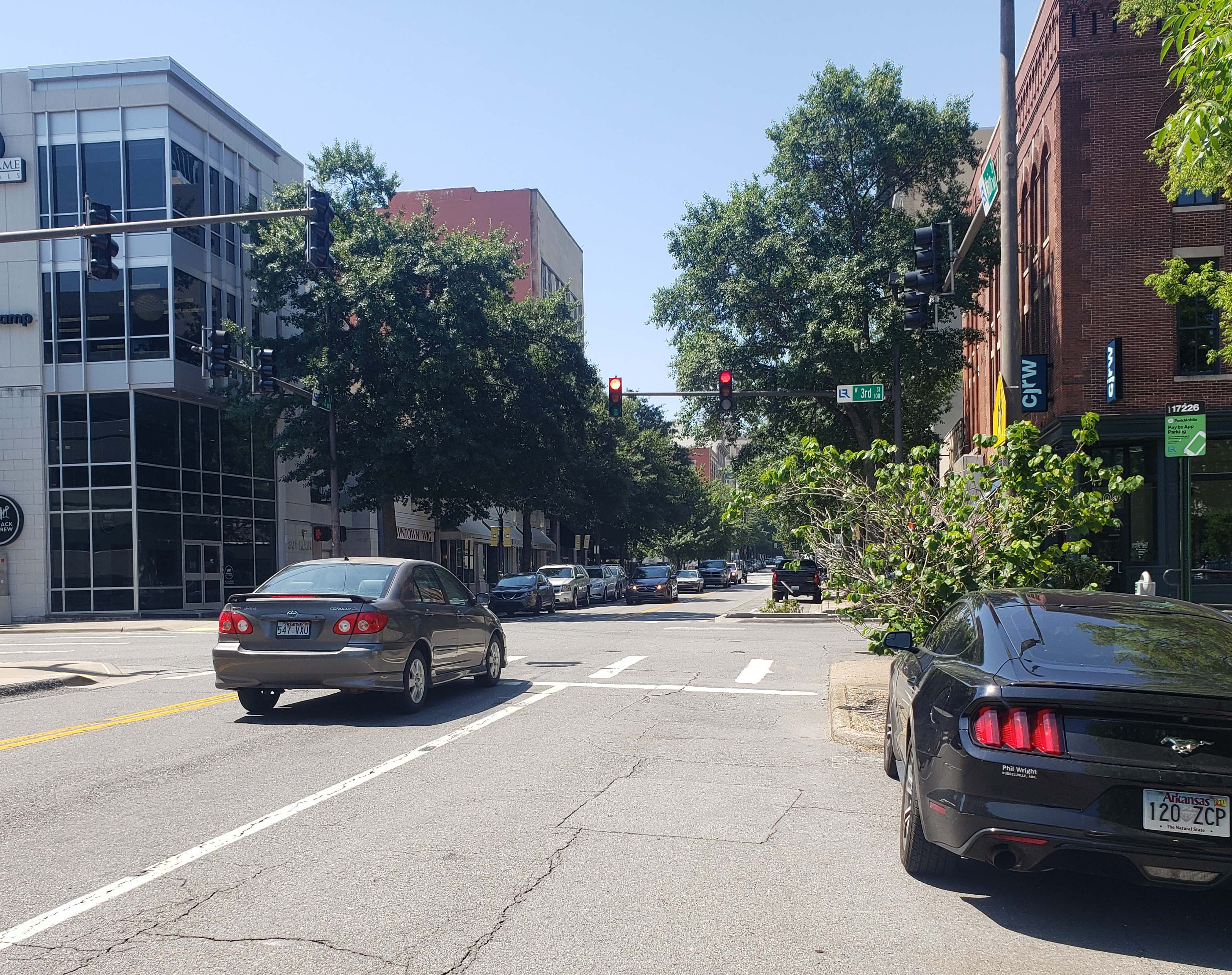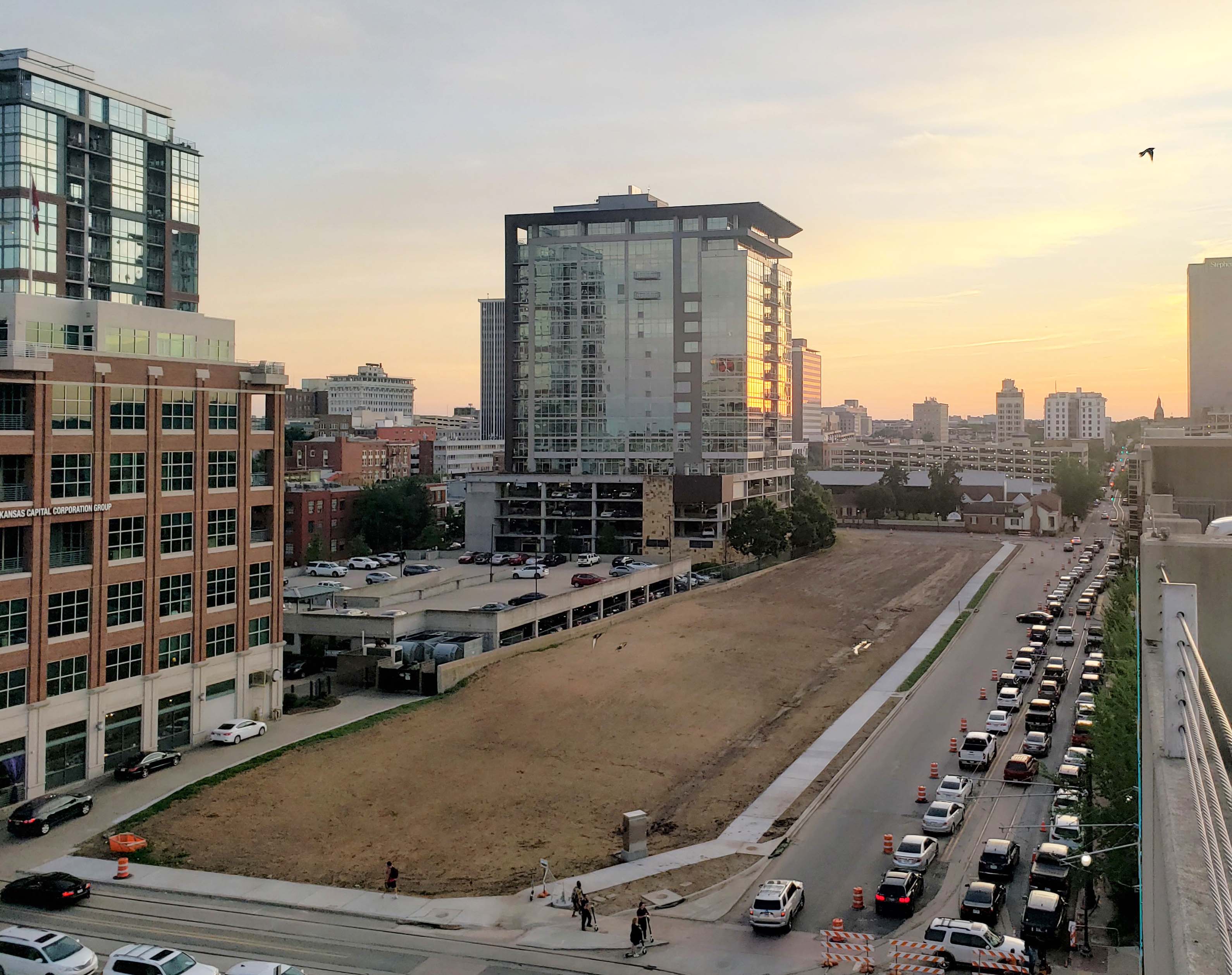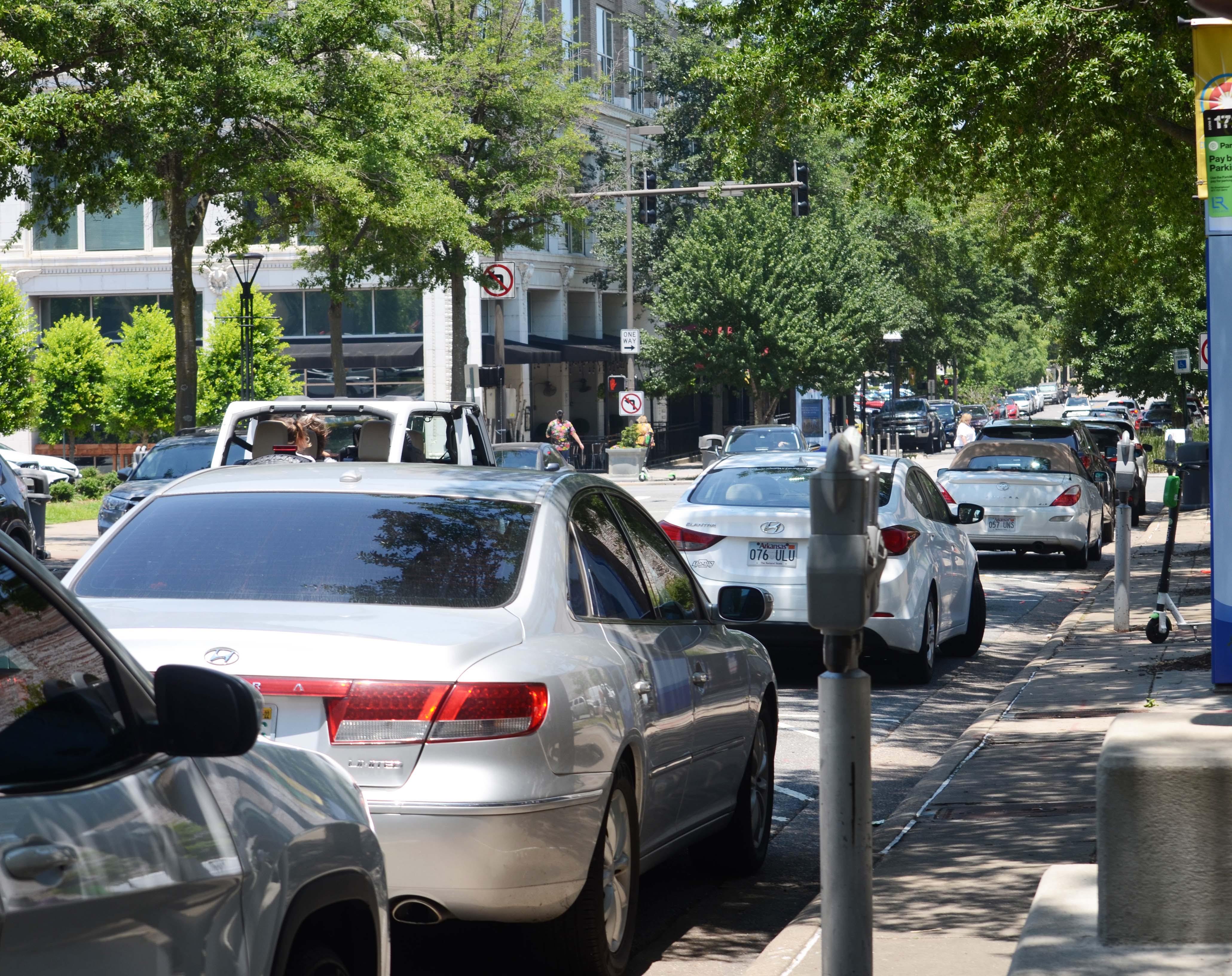Grim expectations: Consumers, Main Street business owners see recession flags ahead
July 4-10, 2022
By Wesley Brown
Halfway through 2022 with the Fourth of July holiday on the horizon, consumers and small business owners in Arkansas and Main Street America are still trying to catch their breath amid the ongoing pandemic.
Going into the second half of 2022, even with unemployment and personal income near-record levels in Arkansas and across the U.S, pessimism about the U.S. economy is growing as economic expectations for the remainder of the year continue to decline.
For consumers, the Conference Board’s highly watched Consumer Confidence Index released on June 28 fell to 98.7 down 4.5 points from 103.2 in May — and now stands at its lowest level since February 2021. The Present Situation Index — based on consumers’ assessment of current business and labor market conditions — declined marginally to 147.1 from 147.4 last month. The Expectations Index — based on consumers’ short-term outlook for income, business and labor market conditions — decreased sharply to 66.4 from 73.7 and is at its lowest level since March 2013.
“Consumer confidence fell for a second consecutive month in June,” said economist Lynn Franco, Senior director of economic indicators at The Conference Board. “While the Present Situation Index was relatively unchanged, the Expectations Index continued its recent downward trajectory — falling to its lowest point in nearly a decade.
“Consumers’ grimmer outlook was driven by increasing concerns about inflation, in particular rising gas and food prices. Expectations have now fallen well below a reading of 80, suggesting weaker growth in the second half of 2022 as well as growing risk of recession by year-end.”
Franco also noted that purchasing intentions for big-ticket items like cars, homes and major appliances held relatively steady — but intentions have cooled since the start of the year and this trend is likely to continue as the Fed aggressively raises interest rates to tame inflation.
And although a record number of travelers hit the roads during the Memorial Day weekend, Franco said vacation plans for the Fourth of July and the rest of 2020 have softened further as rising prices took their toll. “Looking ahead over the next six months, consumer spending and economic growth are likely to continue facing strong headwinds from further inflation and rate hikes,” he said.
Among the key highlights of the monthly survey included consumers’ appraisal of current business conditions in June. According to the report, 19.6% of consumers said business conditions were “good,” down slightly from 19.8%. Another 23% of consumers said business conditions were “bad,” up from 21.7%.
Consumers’ assessment of the labor market was mixed with 51.3% stating that jobs were “plentiful,” down from 51.9%. Conversely, 11.6% of consumers said jobs were “hard to get,” down from 12.4%. Concerning short-term business conditions outlook in June, consumers are growing more pessimistic with 14.7% expecting the business landscape to improve, down from 16.4%. On the other hand, 29.5% expect business conditions to worsen, up from 26.4%.
Consumers were also more pessimistic about the short-term labor market outlook. Just over 16% expect more jobs to be available, down from 17.5%. Twenty-two percent anticipate fewer jobs, up from 19.5%.
The Conference Board survey also shows that consumers were more pessimistic about their short-term financial prospects. Nearly 16% expect their incomes to increase, down from 17.9%, while 15.2% expect their incomes will decrease, up from 14.5%.
On June 22, the U.S. Bureau of Economic Analysis (BEA) reported that state personal income across the U.S. increased 4.8% at an annual rate in the first quarter of 2022 after increasing 3.6% in the same period of 2021. The percent change in personal income across all states ranged from 8.5% in South Dakota to only 1.3% in Hawaii. Arkansans saw personal income jump 5.5% in the first quarter as all key industry sectors saw gains except for accommodations and food services, which support the state’s tourism and restaurant trade.
Small business optimism wanes
For small business owners, the outlook for the second half of 2022 closely mirrors how many consumers are feeling. The National Federation of Independent Business’s (NFIB) Optimism Index fell 0.1 points in May to 93.1, marking the fifth consecutive month below the 48-year average of 98. Owners expecting better business conditions over the next six months decreased four points to a net negative 54%, the lowest level recorded in the 48-year-old survey. Expectations for better business conditions have deteriorated every month since January.
Twenty-eight percent of owners reported inflation was their single most important problem in operating their business, a decrease of four points from April. The net percent of owners raising average selling prices increased two points to a net 72%, back to the highest reading in the 48-year-history of the survey last reached in March and 32 points higher than May 2021.
“Inflation continues to outpace compensation which has reduced real incomes across the nation,” said NFIB Chief Economist Bill Dunkelberg. “Small business owners remain very pessimistic about the second half of the year as supply chain disruptions, inflation and the labor shortage are not easing.”
Other key findings from the NFIB survey include:
• Fifty-one percent of owners reported job openings that could not be filled, up four points from April.
• The net percent of owners who expect real sales to be higher decreased three points from April to a net negative 15%.
• A net 46% (seasonally adjusted) of owners reported raising compensation, down three points from April with a net 25% planning to raise compensation in the next three months, down two points from April but historically high.
• Thirty-nine percent of owners report that supply chain disruptions have had a significant impact on their business, up three points. Another 31% report a moderate impact and 22% report a mild impact. Only 8% of owners report no impact from the recent supply chain disruptions.
In the NFIB’s monthly jobs report on June 2, the labor markets are tight as 51% of all owners reported, they could not fill key positions in May. Overall, 67% of owners reported hiring or trying to hire in May, up eight points from April. Ninety-two percent of those owners hiring or trying to hire reported few or no qualified applicants for the positions they were trying to fill. Thirty-three percent of owners reported few qualified applicants for their open positions and 28% reported none.
“The labor force participation rate is slowly rising but small businesses continue to have a hard time filling their open positions,” said NFIB Chief Economist Bill Dunkelberg. “The number of job openings continues to exceed the number of unemployed workers which has produced a tight labor market and added pressure on wage levels.”
Seasonally adjusted, a net 49% of owners reported raising compensation, up three points from April and one point below the 48-year record high set in January. A net 25% of owners plan to raise compensation in the next three months.
Forty-two percent of owners have openings for skilled workers and 25% have openings for unskilled labor. Sixty-five percent of the job openings in construction are for skilled workers, up 11 points. Sixty-nine percent of construction firms reported few or no qualified applicants, up five points, clearly one of the tightest domestic labor markets in recent history.
A seasonally adjusted net 26% of owners are planning to create new jobs in the next three months, up six points from April and close to a 48-year record high. Hopefully, they will succeed and help close the gap between current employment and the elevated levels in 2020, said Dunkelberg.
Brimming bankruptcies filings
Meanwhile, business bankruptcy filings, a key barometer of small business activity, has continued to spike in 2022. According to data provided by Epiq Bankruptcy, there were 330 commercial chapter 11 filings registered in May 2022, an increase of 34% from the 246 filings in May 2021. Overall commercial filings fell by 4% in May 2022, as the 1,738 filings were down from the 1,813 commercial filings registered in May 2021.
Small business filings, captured as subchapter V elections within Chapter 11, registered an increase of 21% to 123 in May 2022 from 102 in May 2021. Total bankruptcy filings were 31,314 in May 2022, a 10% decline from the May 2021 total of 34,783. Noncommercial bankruptcy filings totaled 29,576 in May 2022, also registering a 10% decrease from the May 2021 noncommercial total of 32,970.
“The bankruptcy market continues to navigate uncharted waters as the effect of the global pandemic lingers and the uncertainty around the U.S. public markets enters the mix,” said Chris Kruse, senior vice president at Epiq, the nation’s leading bankruptcy data analytics firm. “If the economy declines, the bankruptcy market will likely become more active.”
Nationwide, May’s commercial Chapter 11 filings jumped 32% from the 250 filings in April 2022. The commercial filing total represented a 2% decrease from the April 2022 commercial filing total of 1,775. Subchapter V elections within Chapter 11 rose 23% from the 100 filed in April 2022. May’s total bankruptcy filings represented a 4% decrease when compared to the 32,518 total filings recorded the previous month. Total noncommercial filings for May also represented a 4% decline from the previous month’s total of 30,743.
“Rising interest rates, inflationary price increases and global supply concerns are compounding the economic challenges for financially distressed families and businesses,” said Amy Quackenboss, executive director at the nonpartisan American Bankruptcy Institute (ABI). “Legislation currently being considered in the House would expand the debt-eligibility limits for small businesses and individuals that would create greater access and a more efficient process for families and businesses looking for a financial fresh start.”
The debt-eligibility limit for small businesses to elect subchapter V reverted in March to the original $2,725,625 threshold from the expanded amount of $7.5 million first established under the CARES Act of 2020.
The Bankruptcy Threshold Adjustment and Technical Corrections Act (BTATCA) was passed in the Senate in April to restore the eligibility limit back to $7.5 million and cover any subchapter V cases that were pending at the time of the March 27 sunset. On June 21, President Biden signed the BTATCA into law, which sunsets two years from the date that the bill became law. If not extended by 2024, the old threshold will go back in effect.
1. Ordinary Main Street consumers and business owners in Arkansas and across the U.S. are fretting about a possible recession as rising interest rates and inflation are slowing economic growth. On June 29, the U.S. Bureau of Economic Analysis reported that U.S. gross domestic product decreased at an annual rate of 1.6% in the first quarter of 2022, following a robust expansion of 6.9% in the fourth quarter of 2021.
2. Two key monthly U.S. economic indicators, the Conference Board Consumer Confidence Index and the National Federation of Independent Business Optimism Index, both declined for the fifth straight month in June. Real gross domestic product (GDP) growth in Arkansas fell 0.9% in the first quarter as prices of goods and services purchased by U.S. residents rose 8%.





